Related Research Articles

Edo Murtić was a painter from Croatia, best known for his lyrical abstraction and abstract expressionism style. He worked in a variety of media, including oil painting, gouache, graphic design, ceramics, mosaics, murals and theatrical set design. Murtić travelled and exhibited extensively in Europe and North America, gaining international recognition for his work, which can be found in museums, galleries and private collections worldwide. He was one of the founders of the group "March" (Mart) in 1956, and received many international awards. In 1958 Murtić participated in the three biggest events in the world of contemporary art: the Venice Biennale, the Carnegie Prize in Pittsburgh, and Documenta in Kassel. Interest in the art of Edo Murtić continues to grow, with retrospective exhibits in major museums.

Croatian art of the 20th century, that is visual arts within the boundaries of today's Croatia, can be divided into modern art up to the Second World War, and contemporary art afterwards.
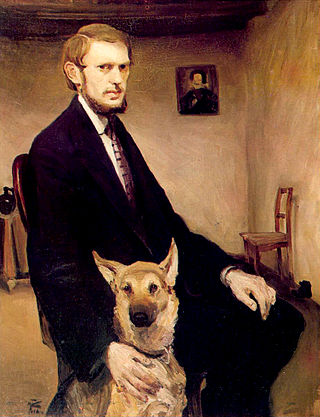
Miroslav Kraljević was a Croatian painter, printmaker and sculptor, active in the early part of the 20th century. He is one of the founders of modern art in Croatia.
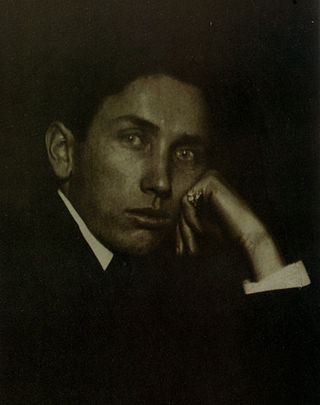
Josip Račić was a Croatian painter in the early 20th century. Although he died very young, and his work was mostly created during his student years, he is one of the best known modern Croatian painters. Today, Račić is regarded as one of the most important representatives of Croatian modern painting.
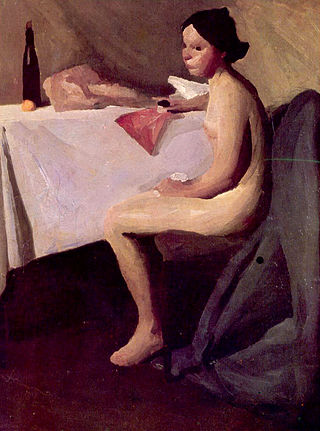
Vladimir Becić (1886–1954) was a Croatian painter, best known for his early work in Munich, which had a strong influence on the direction of modern art in Croatia.
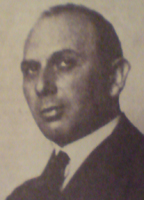
Oskar Herman (1886–1974) was a Croatian-Jewish painter. He was one of the group of Croatian artists known as the Munich Circle, who had a strong influence on modern art in Croatia.

Modern Gallery is a museum in Zagreb, Croatia that holds the most important and comprehensive collection of paintings, sculptures and drawings by 19th and 20th century Croatian artists. The collection numbers around 10,000 works of art, housed since 1934 in the historic Vranyczany Palace in the centre of Zagreb, overlooking the Zrinjevac Park. A secondary gallery is the Josip Račić Studio at Margaretska 3.

Mato Celestin Medović was a Croatian painter. Best known for his large paintings depicting historical scenes, and his series of colourful landscapes and seascapes of his native Dalmatia, Medović is one of the earliest modern Croatian painters.

Menci Clement Crnčić was a Croatian painter, printmaker, teacher and museum director. He studied painting and drawing in Vienna and Munich, and trained in graphic arts in Vienna, studying etching and engraving. He was the first artist in the Croatian graphic tradition to abandon a strictly linear style and use tonal variation to create contrasting areas of light and shade.
Ordan Petlevski was a prominent artist working in the media of painting, drawing, graphic arts and illustration.

Emanuel Božidar Vidović was a Croatian painter and graphic artist from Split.
Jerolim Miše, was a Croatian painter, teacher, and art critic. He painted portraits, still lifes and landscapes of his native Dalmatia. A member of the Group of Three, Group of Four, and the Independent Group of Artists.
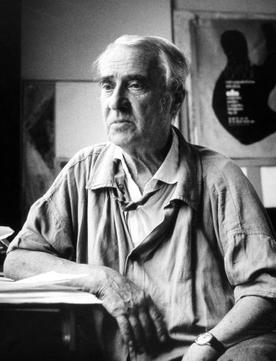
Marino Tartaglia was a Croatian painter and art teacher, for many years a professor at the Academy of Fine Arts, Zagreb.
Zlatko Šulentić was a Croatian painter of landscapes and portraits.

Ignjat "Ignjo" Job was an important representative of colour expressionism in the art scene of Yugoslavia during the 1930s. Job's landscapes of Dalmatia are reminiscent of the style of Van Gogh. He is best known for his series of paintings inspired by life on the island of Brač. Job said that “the beneficial influence of the Brač landscape can be felt, the hot sun, blue sea, and green branches of olive trees swayed by the breath of the maestral”. His paintings depicted the Mediterranean landscape, motifs of the town of Supetar, fishing themes, and more rarely portraits and nudes.
Oton Postružnik (1900–1978) was a Croatian artist, painter, graphic artist, and ceramist. He was one of the founding members of the Earth Group artist collective in Zagreb from 1929 to 1933. He studied in Zagreb, Prague and Paris, and was a professor at the Academy of Fine Arts in Zagreb from 1950 to 1970. He is best known for his abstract paintings of natural subjects, such as his Leaf series.
Đuro Tiljak (1895–1965) was a Croatian artist, writer and teacher. He graduated from the Academy of Fine Arts in Zagreb, and studied for some time in Moscow with Wassily Kandinsky. During the 1930s, he was editor of the journal "Culture" (Kultura) and "Writer" (Književnik) magazine. For many years he was a professor at the Academy of Fine Arts in Zagreb. He was a member of the Croatian Academy of Sciences and Arts.
Ferdinand Kulmer was a Croatian abstract painter and teacher.
Edo Kovačević was a Croatian artist, best known for his colourful landscapes and views of suburban Zagreb. He worked mainly in oils and pastels, using subtle colour harmonies and lively brush strokes to bring out the natural beauty of ordinary subjects. Kovačević also designed theatrical stage sets for the Croatian National Theatre, the Drama Theatre and the Puppet Theatre, for many years, taught art at the Zagreb School of Crafts, and organized art exhibitions and installations.
Branko Ružić was a prominent Croatian painter, sculptor and professor at the Academy of Fine Arts, Zagreb.
References
- 1 2 3 4 "Oton Gliha - biography". Artists. Galerija Divila. Archived from the original on 6 November 2010. Retrieved 25 February 2012.
- 1 2 3 4 5 6 7 "Oton Gliha: Drystone Walls 5-71, 1971". Series: Croatian Modern Art. Croatian Post, Inc. Archived from the original on 2 February 2012. Retrieved 25 February 2012.
- 1 2 "Alternative landscapes of the 1950s and 1960s - From nature to vision". Exhibitions. Art Pavilion, Zagreb. Archived from the original on 4 March 2016. Retrieved 25 February 2012.
landscape in works of the most eminent croatian painters in the 1950s and 1960s
- 1 2 3 4 Igor Zidić. "Krčke Gromače, Hrvatska Glagoljica, Ono Drugo I Oton Gliha". Exhibitions (in Croatian). Adris Gallery. Archived from the original on 28 June 2012. Retrieved 25 February 2012.
Gliha saw some direct connection between the rocks of Krk, as some sort of "letters" in an open landscape of a book, and the Croatian Glagolitic script which is found in religious books and inscriptions on stone.
- 1 2 3 4 5 6 7 8 9 "Oton Gliha". Artists. Museum of Contemporary Art, Zagreb. Retrieved 25 February 2012.
- 1 2 3 4 5 6 7 8 9 10 11 12 13 14 "Oton Gliha 1914-1999, HR". Artists. ArtFacts. Retrieved 25 February 2012.
- ↑ "Oton Gliha: Drystone Walls". The Collection. Filip Trade Collection. Archived from the original on 17 February 2013. Retrieved 25 February 2012.